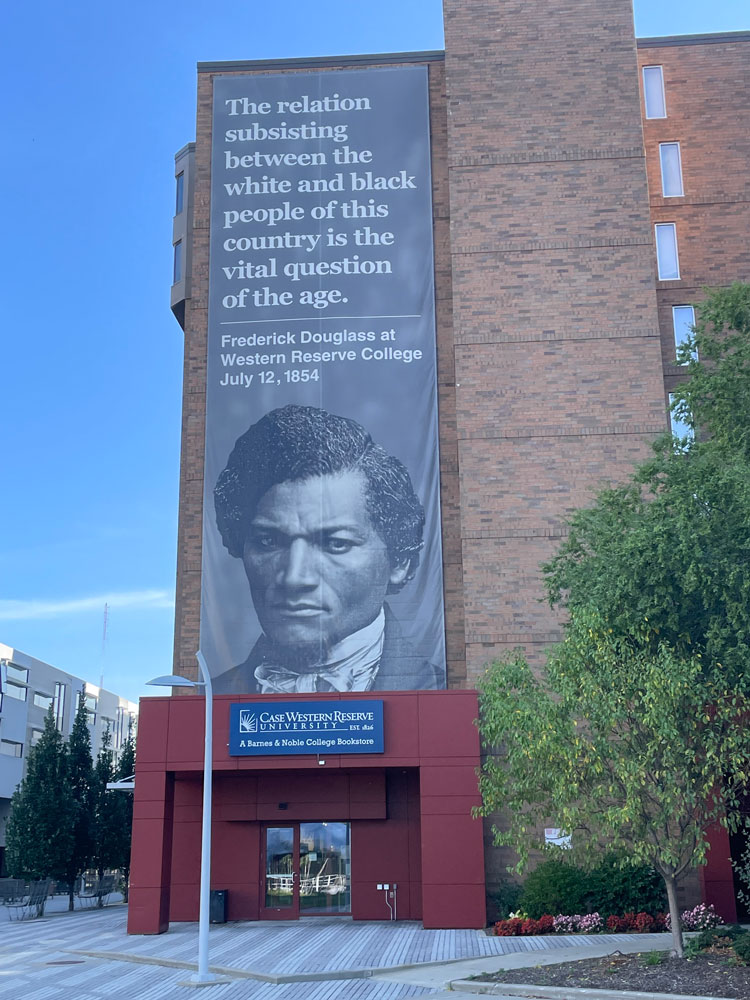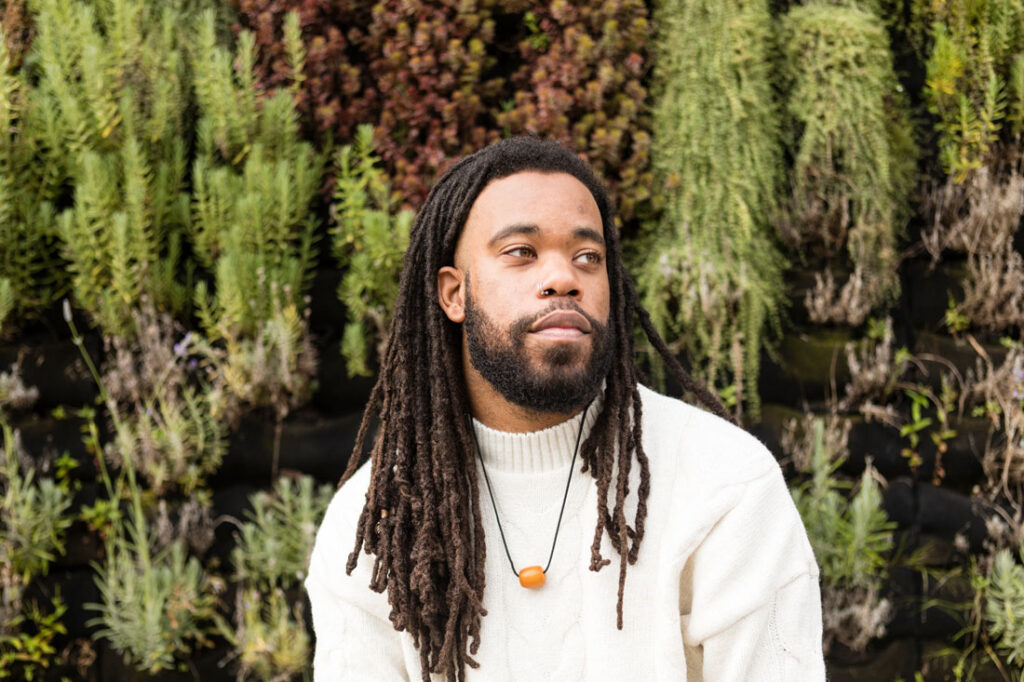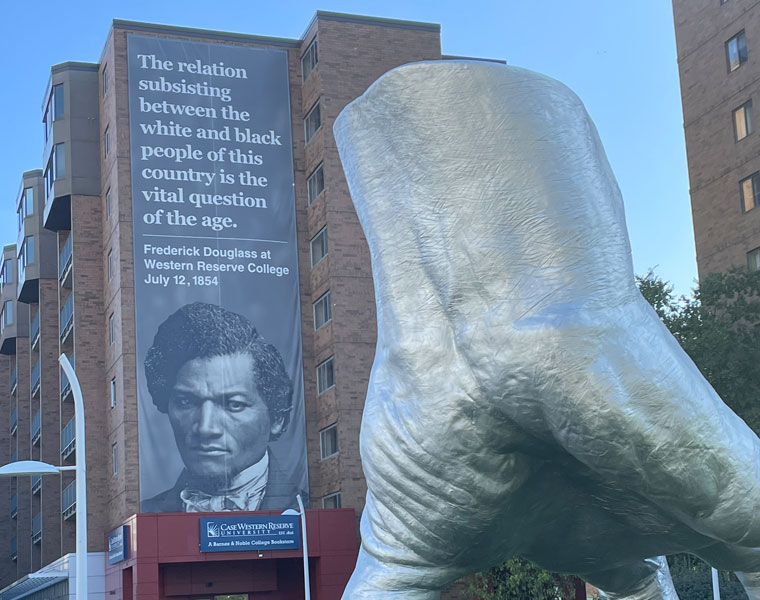
Over 168 years since he appeared before the graduating class of Western Reserve College, abolitionist, author and orator Frederick Douglass’ visit is being commemorated on campus.
Through the installation of a 66-foot-tall banner on Case Western Reserve University’s Triangle Building, a larger-than-life image of Douglass stands below a key observation from his July 12, 1854, address to the campus, then located in Hudson, Ohio: “The relation subsisting between the white and black people of this country is the vital question of the age.”
Douglass, an escaped slave who became a leading advocate for abolition, traveled the United States and the world speaking against the practice of slavery and later became active in the women’s rights movement.
The address, titled “The claims of the Negro, ethnologically considered: an address before the literary societies of Western Reserve College, at commencement” was one of several speeches Douglass delivered in Northeast Ohio over his lifetime.
Cleveland-based graphic artist and activist John Brown VI was commissioned by Case Western Reserve’s Putnam Collection to design the banner. A graduate of Ohio University, Brown played an integral role in student-led protests and social resistance. Today, he uses personal experiences to influence his design work, considering themes of interaction, audience, and conversation.
“Nearly two centuries later, Douglass’ words are still relevant,” said Brown. “In the ‘modern world,’ race and perceptions of race affect everything; from communications and trends to opportunities and life experiences. This work is special to me as it recenters a prominent Black figure and forces conversations on race to address the integral issues we face today: inequity, equality and empathy.”

Photo credit: Amber N. Ford
Brown’s design towers above the back edge of Toby’s Plaza at the corners of Mayfield Road and Euclid Avenue and features the most forceful statement from Douglass’ remarks coupled with a photo as he looked at that time. Many historians consider Douglass the most photographed American of the 19th century, having sat for at least 160 portraits over the course of his life in an effort to reshape society’s misperceptions of Black people.
“This banner provides an excellent opportunity to remind us of the importance of Frederick Douglass and his connection to the early history of the university,” said Kathy Barrie, director of the Putnam Collection at Case Western Reserve. “Invited by the students to speak at the 1854 commencement, he used the occasion to present his argument in defense of the African American people and promoted the abolition of slavery.”
Established in 1980, the Putnam Committee is composed of art experts connected to the university who select artists and guide public art projects across campus. Through the Putnam Collection, the committee has influenced the installation of over 100 works of art of varying media and styles—primarily by artists from the Western Reserve region.
The Douglass banner is the fourth in a series of installments on Toby’s Plaza by the Putnam Collection as part of the Uptown Banner Project. It is expected to remain in the plaza through 2023.

